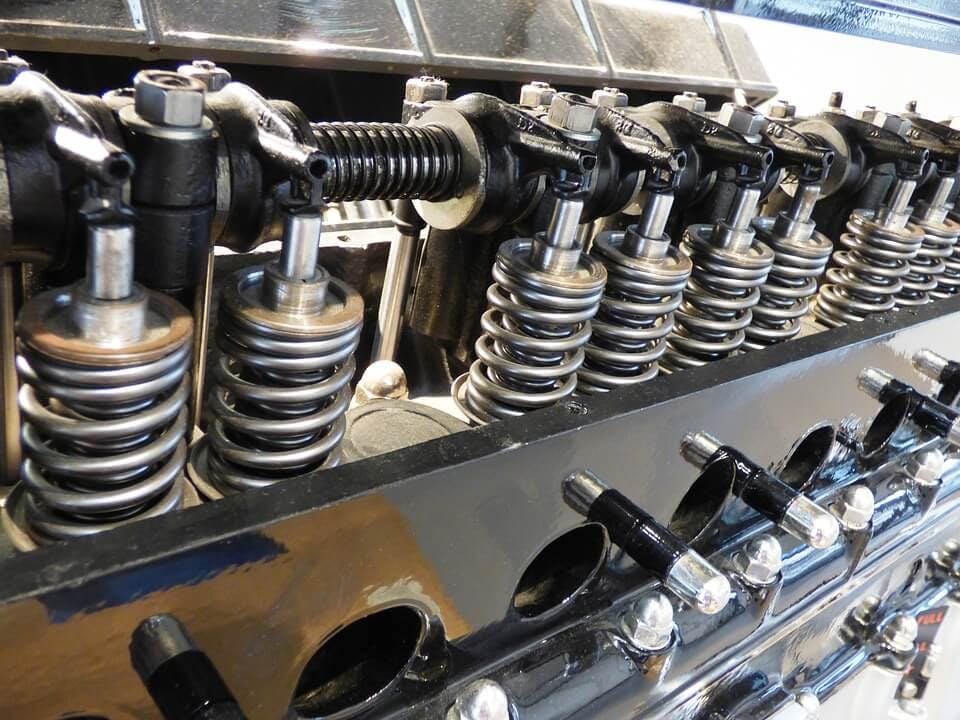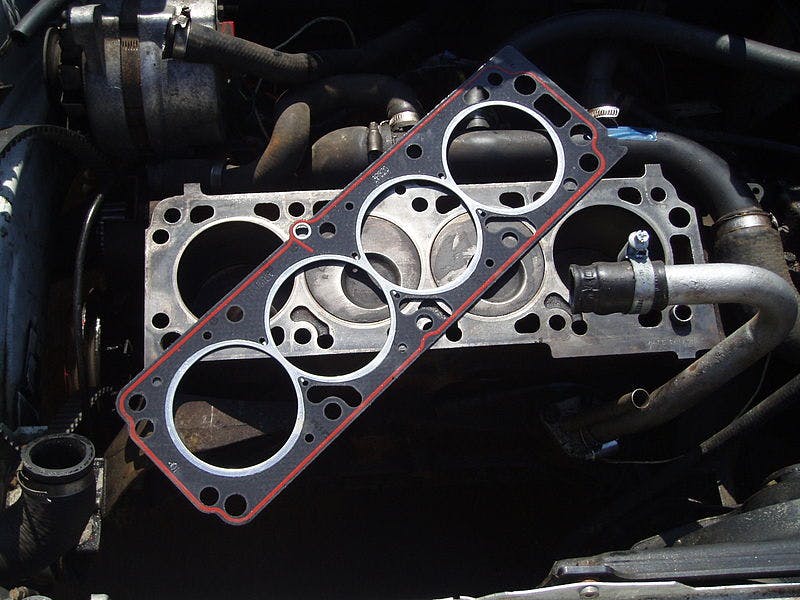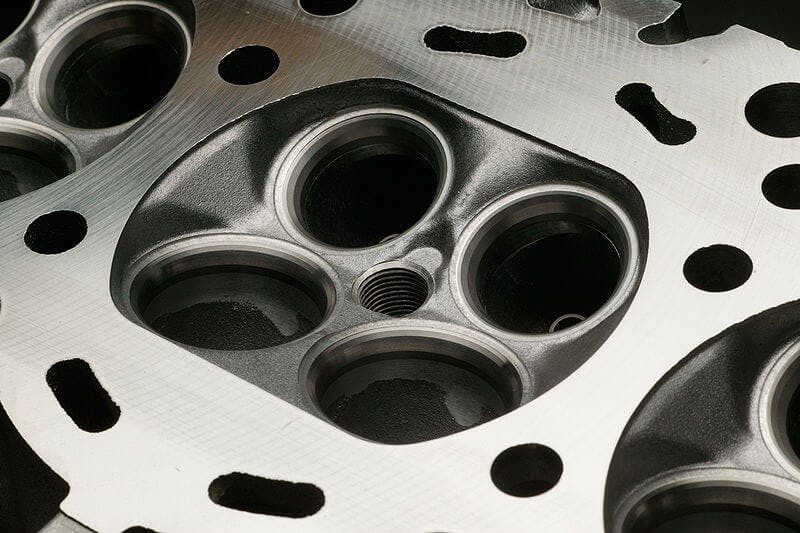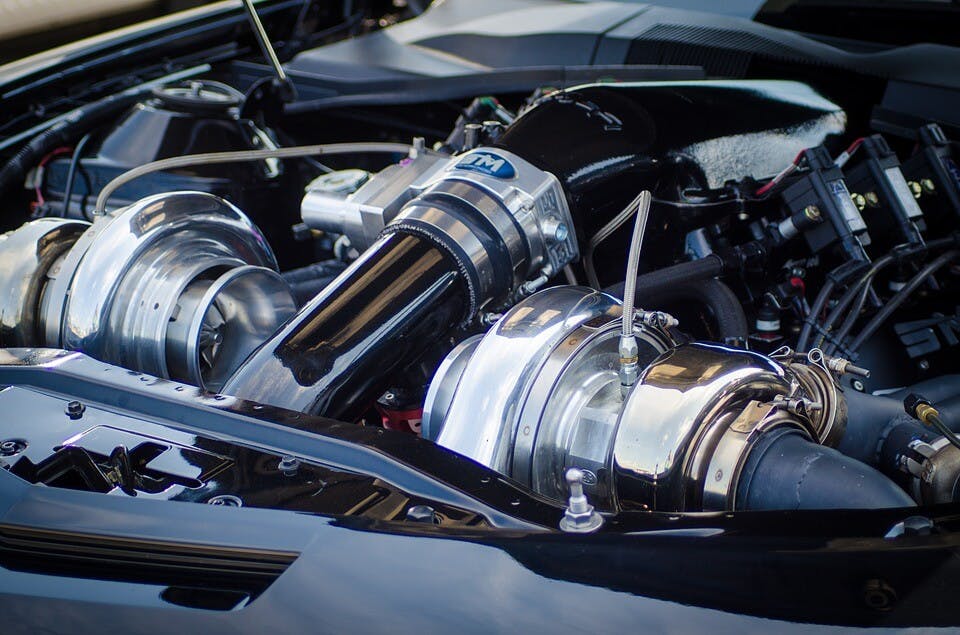Cylinder head modification: How to does it increases engine performance?

Modifying the cylinder head is a popular but technically demanding way to increase engine performance. So in this article, we will look at the possible modifications of the cylinder head and its accessories.
This article is only informative about potential adjustments to the cylinder head and its accessories and does not serve as a guide.
Indholdsfortegnelse
Adjusting the cylinder head and its accessories:
reducing the cylinder head
reducing the cylinder head gasket
enlarging and polishing the intake and exhaust channels in the cylinder head
enlarging the valve seats
modifying the valves
Lowering the cylinder head and cylinder head gasket:
One way to increase engine power is to increase the pressure in the cylinder by increasing the compression ratio. The compression ratio can be increased in several ways, for example:
by lowering the cylinder head
by reducing the gasket under the cylinder head
by lowering the engine block
by changing the height of the pistons or by replacing the pistons
by replacing the connecting rods with longer connecting rods
We will only be interested in the first two options. The more economical of these methods, utilizing which it is possible to increase the compression ratio, is to reduce the cylinder head gasket or replace it with a lower gasket.

Head Gasket: What is it, and how to tell if it's blown?
A lower cylinder head gasket will not increase performance, because the reduction can only be calculated in a few tenths of a millimeter. However, it is a less demanding and gentler way than lowering the cylinder head itself.
Lowering the cylinder head is a much more effective but more difficult way. If you do not have the necessary tools and sufficient knowledge, I advise you to leave this adjustment to the experts.
With this modification, there is a risk that the valves will meet with the pistons if the head is lowered too much, which would be expensive. Also, lowering the head is not done with files or other similar tools as many garage do-it-yourselfers on the forums think.

Cylinder head: Did you know what is its function?
The cylinder head must be lowered evenly. The charge is reduced by approximately 1 to 2 millimeters depending on the engine type. In most cases, however, 2 millimeters is the limit, when there is already a risk of collision between the valves and the pistons.
After such modification, the increase in performance is already noticeable; the engine has more torque and revs up more easily.

Enlarging and polishing the intake and exhaust channels of the cylinder head:
If you've ever had the chance to see a disassembled cylinder head, you've surely noticed that the surface of the stock intake and exhaust channels is rough and imprecisely shaped. All this causes large pumping losses when the cylinder's contents are sucked in and blown out.
So, to reduce these losses, we have to polish the channels, change their shape and increase their diameter. The diameter of the intake and exhaust channels of the cylinder head can be increased by only a few tiny millimeters, which will not bring almost anything. Though together with other modifications, it will help.
Another advantage of such modification of the cylinder head is, as already mentioned, the reduction of pumping losses, which increases the engine's volume (filling) efficiency.
Volumetric efficiency of the engine:
The engine's volumetric efficiency is the ratio between the amount of mixture sucked into the cylinder, and the theoretical amount of mixture sucked into the cylinder without losses. The volume efficiency of the naturally aspirated engine varies on average from 50% to 90%.
At the same time, at certain revolutions, it reaches a maximum, and with a further increase or decrease of revolutions, the filling efficiency of the engine decreases.
The engine achieves the maximum torque at the speed of maximum volumetric efficiency, and the range of ideal engine speeds is also located in this area. Adjusting the intake and exhaust channels of the cylinder head is done using an electronic grinder or a technical cutter.

Engine Power And Torque: Which of these parameters is more important?
Modified intake and exhaust channels of the cylinder head and intake manifold thus increase the amount of mixture delivered to and out of the cylinders, thereby increasing the power and the torque value.
Enlargement of valve seats and modification of valves:
By enlarging the valve seats and adjusting the valves, a reduction in pumping losses and an increase in the filling efficiency of the engine are achieved. When enlarging the diameter of the valve seats, the same principle and work procedure applies as when enlarging the intake and exhaust channels of the cylinder head.
Adjusting the valves consists in polishing the valve stem and head and rounding the edges of the valve plate. Valves are rounded on a lathe or grinder.
That would hopefully be informative for today. In the next article, we will look at how and with what it is possible to increase the engine's volume.